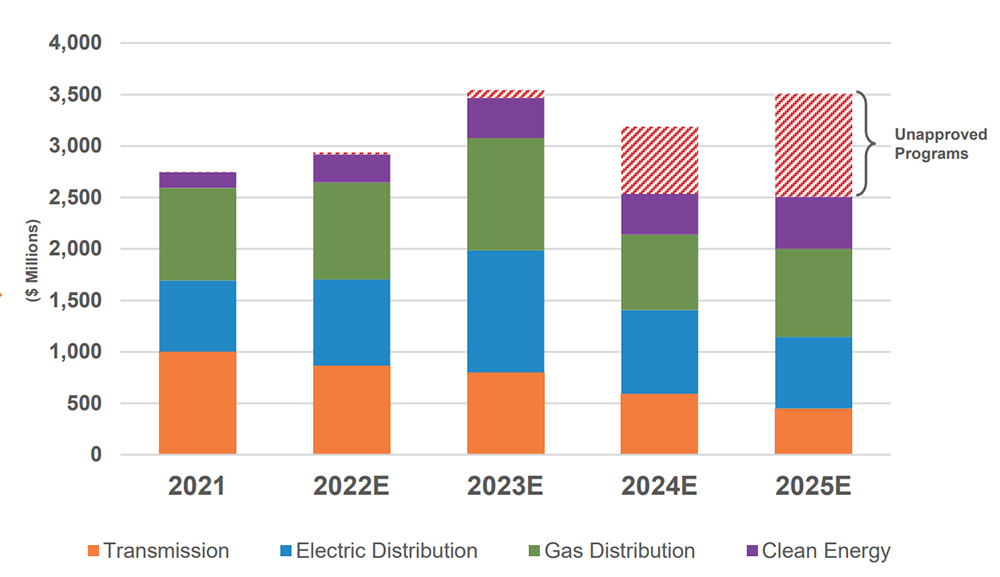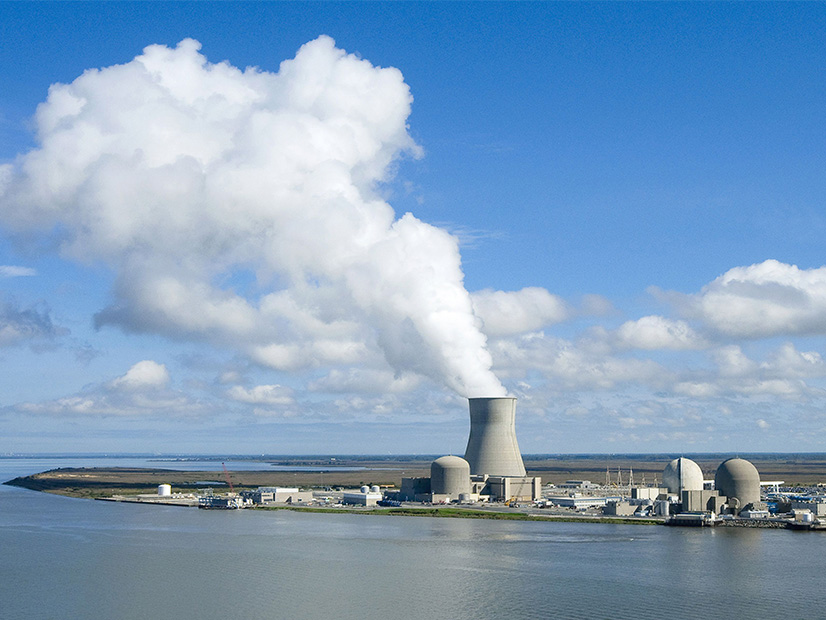Public Service Enterprise Group (NYSE:PEG) said Tuesday that it could secure projects costing $1-$3 billion under New Jersey’s solicitation seeking proposals for transmission upgrades.
Speaking during the company’s first quarter earnings call, President and CEO Ralph Izzo said the utility is hopeful that one or more of the proposals it submitted will be picked by the New Jersey Board of Public Utilities (BPU) to help the agency develop a robust transmission system that will tie New Jersey’s offshore wind projects to the grid on land.
 PSEG CEO Ralph Izzo | National Clean Energy Week
PSEG CEO Ralph Izzo | National Clean Energy WeekThe initiative is part of PSEG’s sweeping clean energy program now pending as Izzo prepares to step down on Sept. 1, after 30 years at the company and 15 in the top spot. Announcing the retirement in April, PSEG called Izzo a “pioneer” who championed clean energy and the “sustainable business strategy” that helped reduce carbon emissions from the company’s power generation by 98% since 2006.
As part of a planned leadership change, Izzo will continue as executive chair of the board until his retirement on Dec. 31. Current Chief Operating Officer Ralph LaRossa, another 30-year company veteran, will succeed Izzo as president and CEO.
Izzo acknowledged that although the investment in the offshore transmission system “could range” up to $3 billion, it also could be zero. He said the company, which submitted its proposals with Danish offshore wind developer Ørsted, took part in all four public hearings organized by the BPU in the last two months to explore different aspects of the proposed transmission system. The BPU has said it could pick some, all or none of the proposals. (See NJ Seeks Efficiency, Savings in OSW Transmission Process.)
“The solutions we submitted range from single collectors at various landing points to a linked transmission network out in the ocean,” Izzo said.
“We’re not guaranteed anything in that solicitation,” he said, but added that “we happen to think we’re the best bidder in the lot.”
Public Support for Nuclear
Izzo also told investors that the utility plans a $15-$17 billion capital spending program through 2025, the majority of which will support the company’s commitment to cut its carbon emissions in line with the Paris Agreement to limit the global average temperature rise to 1.5 degrees Celsius. The investments are aimed at meeting that goal “either through direct carbon emissions reductions, energy efficiency or climate adaptation,” Izzo said.
“Based on our initial carbon inventory, our Scope 1 and Scope 2 emissions comprised roughly 15% of our total carbon emissions,” Izzo said. “Our challenge, one that we embrace, is to address our largest emissions category, which falls under Scope 3, the largely downstream customer use of our energy products that also includes the emissions profiles of our upstream suppliers.
“We are fully engaged in developing our plans, staffed with technical advisers and internal teams” who are preparing a plan that will go to the UN at the end of the year as part of the organization’s “Race to Zero” initiative, Izzo said. “We are confident that we are creating shareholder value by growing our rate base in alignment with New Jersey’s clean energy goals.”
Scope 1 emissions are those generated by a company’s operations directly under its control, while Scope 2 emissions are those generated by the electricity, steam, heating or cooling a company purchases.
 PSEG capital spending 2021-2025E | PSEG
PSEG capital spending 2021-2025E | PSEG
PSEG invested $656 million in the first quarter, part of the expected $2.9 billion in infrastructure spending in 2022 that will be “aligned with NJ’s clean energy goals,” the company said in its presentation.
PSEG in February completed the sale of its fossil plants in New York and Connecticut, and the company last year moved up its pledge to reach net-zero emissions by 2030, rather than the previous goal of 2050.
Nuclear power is expected to play a key role in that strategy. Izzo said he is “hopeful” that a tax incentive to support nuclear plants can be passed in Washington to “preserve the economic viability” of nuclear plants, including those owned by PSEG.
“We have seen a positive shift in public sentiment in support of nuclear power, and its carbon free energy security attributes, since the Russian invasion of Ukraine,” he said. “We do think that current markets might make it easier, candidly, in Washington, to score a production tax credit in terms of the impact on the federal budget. And certainly, that would be helpful in New Jersey to reduce the pressure on New Jersey customers.”
Such credits also would give stability to nuclear plant owners, by providing financial support for years to come, Izzo said. At present, PSEG must apply every three years to the BPU for financial subsidies to support the utility’s three nuclear plants, Hope Creek nuclear power plant and Salem 1 and Salem 2. The BPU, in each of the last two three-year periods, has awarded the plants $300 million under the zero-emission certificate (ZEC) program. (See NJ Nukes Awarded $300 Million in ZECs.)
He said that the Department of Energy (DOE) recently opened a “funding window to help struggling nuclear plants.” The department on April 19 said it was accepting submissions for the $6 billion Civil Nuclear Credit Program. (See DOE Launches $6B Nuke Credit Program.)
But none of PSEG’s nuclear plants meet the criteria for funding, Izzo said. The first cycle of awards from the program will “prioritize reactors that have already announced their intention to cease operations,” according to the DOE.
“We will endeavor to obtain the maximum benefit for our nuclear units from the DOE program, should we qualify in future rounds,” he said. “However, we do not believe that the DOE grant program provides sufficient revenue stability or visibility needed to make longer-dated fuel and license extension decisions.”
Earnings
PSEG reported a net loss of $2 million, (-$0.01/share), for the first quarter compared to net income of $648 million, or $1.28 per share, in the first quarter of 2021, according to its earnings release. Non-GAAP operating earnings for the first quarter were $672 million, or $1.33 per share, compared to non-GAAP operating earnings of $650 million, or $1.28 per share, in the first quarter of 2021.
The net loss in GAAP reported earnings reflected $674 million of reconciling items, mainly mark-to-market adjustments “related to higher energy prices versus our existing forward-sale contracts,” Izzo said.
The results show “solid utility and nuclear operations and rate base growth from regulated investments, as well as lower cost resulting from the completed sale of PSEG Fossil that will benefit first-half 2022 comparisons,” he said.


